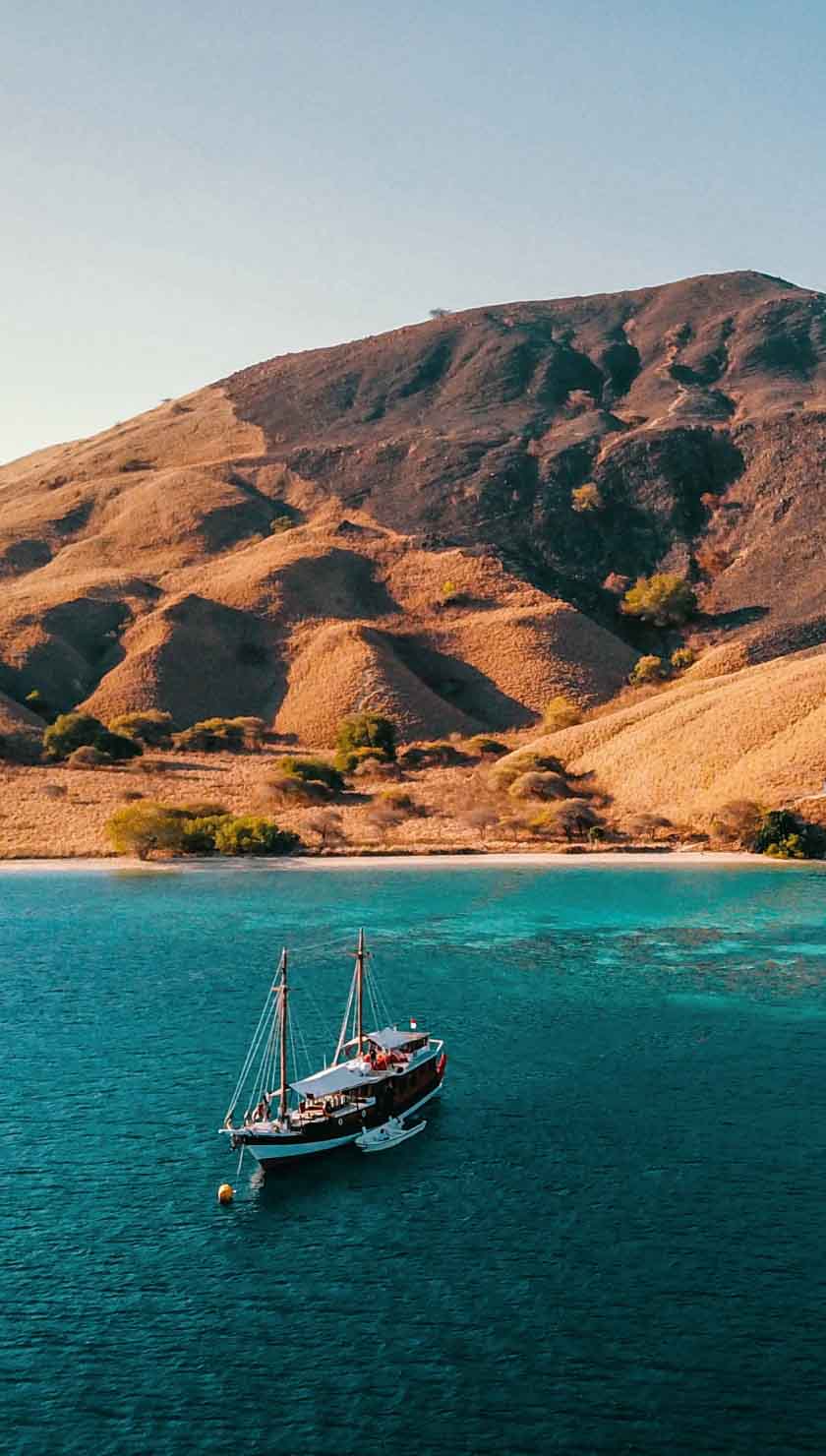Drake Passage - Named after the British privateer Sir Francis Drake, this is the shortest route to Antarctica… and it’s known for rough water. But don’t let queasiness stop you from enjoying the sight of gliding albatross, glittering icebergs, and enormous whales. If the passage is peaceful, lower your gaze to the water, where Hourglass Dolphins, Humpback Whales, and Fin Whales can be seen. Also, look out for the ship’s crossing of the Antarctic Convergence, where cold and warm currents meet, and the birdlife changes in species composition.
South Georgia - Regarding Antarctic wildlife encounters, South Georgia offers some of the best, most impressive landscapes and fascinating relics of Antarctic history. King Penguins and their chicks number in the tens of thousands, and fur seals are also plentiful on their own breeding beaches. Elephant seals, Macaroni Penguins, sea lions, Wandering Albatross, and Gentoo Penguins vie for attention with Grytviken’s abandoned whaling village, where seals and penguins roam the streets.
Falkland Islands - Antarctica ocean cruises in the Falklands are treated to a great spread of birds and a unique mix of South American culture and Victorian charm. Hiking the shores of the Falklands, you’ll enjoy ocean vistas full of black-browed albatross, storm petrels, diving petrels, and shearwaters. Penguins are also a big draw here, with Magellanic, Gentoo, and Rock-Hopper species on display. Additional points of interest include the local church, museum, and some old stranded clippers.
Antarctic Peninsula - Many of the best Antarctica cruises include a visit to the Antarctic Peninsula, where you can set foot on the mountainous, glaciated mainland of the Antarctic continent. If you disembark at Brown Bluff, you’ll see Adélie and Gentoo Penguins breeding while Leopard Seals wait in the water, hoping for a penguin snack. On the peninsula's west side, you’ll probably take a Zodiac to see Cierva Cove’s icebergs, Humpback Whales, Crabeater Seals, and a Chinstrap Penguin Rookery. Trinity Island, with nesting Gentoo Penguins, is another popular site on the Antarctic Peninsula’s west side.
South Shetlands - Polar cruises that include the South Shetland Islands in their trips are well-rewarded. On Deception Island, dock to explore hot springs and an old whaling station, surrounded by countless Cape Petrels, Kelp Gulls, Skuas, and Terns. Another landing point, on Half Moon Island, hosts a big Chinstrap Penguin rookery. Breeding Gentoos with their bright red beaks, Adélies and Macaronis coexist in the South Shetlands. And the marine waters top it all off with Crabeater, Leopard, and Weddell Seals- Fin, Humpback, and Southern Right Whales.
Ross Sea - Antarctica expedition cruises are at their most adventurous in the Ross Sea, a remote area near New Zealand. Its waters contain Killer, Humpback, and Minke Whales, and Ross Seals is added to the normal roster of Leopards and Crabeaters. Adventure activities on Ross Sea cruises may include helicopter landings in astounding terrestrial environments, like dry valleys evoking Mars and the 30-meter-high Ross Ice Shelf. Flanked by dramatic mountains and claiming historic sites, Ross Island is another excellent option for exploring on foot. For penguins-lovers, enormous rookeries of Emperors and Adélies won’t disappoint.
Elephant Island - Passengers on Antarctica cruises near the South Shetlands get a real treat if their vessel visits Elephant Island. Its inhospitable cliffs lay claim to one of the most thrilling Antarctica histories: they were a bleak home to about 20 of Sir Ernest Shackleton’s crew for four months after Shackleton’s boat was shipwrecked. Chinstrap Penguins and seals are the only inhabitants of the sailors’ camp at Point Wild.
South Orkney Islands - The small Argentine research station on the South Orkney Islands, Orcadas station, was founded in 1903 and collects meteorological data amidst the unparalleled scenery of penguin and petrel colonies. Adélie, Gentoo, and Chinstrap Penguin species inhabit small beaches at the base of cliffs whose crags make excellent breeding stations for Pintado Petrels and Snow Petrels. Fur Seals have claimed other beaches on the islands, while whales swim in the offshore waters. Walking tours to some of the beaches require permission from the station.
Antarctica’s Base Camp - nestled among towering glaciers and pristine landscapes- is a vital outpost for scientists and adventurers exploring the icy continent’s breathtaking beauty. Visitors who embark on small-ship cruises to this remote region experience a rare opportunity to witness unparalleled wildlife, from penguin colonies to migrating whales, in an environment largely untouched by human activity. These cruises often include stops at research stations, like the famed Port Lockroy, giving travelers a glimpse into the scientific efforts that study the impact of climate change. Ideal for the eco-conscious traveler, these intimate voyages allow for greater environmental responsibility and deeper immersion into the wonders of Antarctica’s frozen wilderness.
Best time to cruise Antarctica
No cruise will visit Antarctica with winter’s polar ice, roiling seas, and sub-freezing temperatures. Therefore, you’ll cruise Antarctica between November and March. In November, the ice floes and bergs are freshly chiseled, and the snow is pristine. Of course, it’s also colder. Wildlife is not at its most plentiful; however, you’ll see penguins and seabirds conducting bizarre courtship displays, mating, and nest-building. December to January boasts the most sunlight, the most plentiful wildlife… and, of course, the most tour bookings. Still, it’s worth braving the crowds to see hatching penguin chicks, seal pups, and all the other wildlife that makes Antarctica cruises so special. Popular landing grounds are muddy by February and March, and some wildlife has departed, but the crowds also decrease… while whale populations are at their peak! The warming weather also provides opportunities to venture farther south.
How to get to Antarctica?
Antarctica can be reached from South America and New Zealand. The best international airports to use as your stepping stone are Santiago (Chile), Buenos Aires (Argentina), Montevideo (Uruguay), and Christchurch or Wellington (New Zealand). All these cities field a full roster of international flights every day and convenient regional flights to get you to your cruise’s port of departure.
Where do Antarctica cruises depart from?
Many cruises depart from the port of Ushuaia, Argentina. It’s easy to get here by plane from Buenos Aires and Santiago. Other cruises start with a flight to Antarctica from Punta Arenas (Chile) to avoid sailing over the Drake Passage. Fly from Santiago to Punta Arenas for this itinerary. Some other cruises depart from the port in Montevideo, Uruguay; since Montevideo is Uruguay’s capital city, it’s easy to get from your international flight to the port. Slightly less easy is the journey to Bluff, New Zealand. You must fly from Wellington or Christchurch to Invercargill and take a bus or car to Bluff.
What should I pack for an Antarctica Cruise?
Consider the diverse land excursions that await you when packing for your cruise to this icy wonderland. For thrilling shore visits, where you'll encounter curious penguins and majestic ice formations up close, bring waterproof and insulated boots, essential for stepping ashore onto icy terrain.
Layering is key to staying comfortable during Zodiac cruises, hiking excursions, and wildlife encounters, so pack moisture-wicking base layers, insulating mid-layers, and windproof outerwear to combat the polar chill. Don't forget to shield yourself from the bright Antarctic sun with high-quality sunglasses, and capture the magic with a sturdy camera to preserve your unforgettable memories. Your voyage to Antarctica promises a mesmerizing blend of breathtaking landscapes and wildlife encounters.
With the right gear in your luggage, you'll be fully equipped to savor every moment of this extraordinary expedition.
Antarctica Cruise Tips
Plan ahead and arrive early - If you want your first choice of cruise, it’s best to book far in advance, especially if you’d like to visit during December or January. And because flight delays and inclement weather are always possible in the polar regions, it’s best to schedule your arrival at your port of departure a full day in advance. Also, remember that not all trips end up at the same port from which they departed! Plan your flights accordingly.
Choosing the right trip - Consider the following when choosing your cruise: proneness to motion sickness, desire to explore on land, interest in historical sites, tolerance of crowds and waits for wildlife seasons, and comfort with cold temperatures.
What to pack - It’s important to stay comfortable at various temperatures. You’ll want to bring layers that can be added when waiting for the perfect photograph and taken off for a trek. Rain gear, sunscreen, and good insulation for your hands, head, and feet are all very important. Check whether or not your cruise provides a parka. And remember to bring a camera and binoculars!
Seasickness - The Drake Passage is known for rough waters, but even calm seas can make some passengers green. You must consult your doctor before your trip and bring medication if necessary.
Antarctica Travel Advice - Americans, Canadians, and Australians must pay an Argentinian Reciprocity Fee online before they visit Antarctica. There is no Antarctic currency, but at Port Lockroy on the Antarctic Peninsula, dollars, pounds, and euros are accepted. Most ships charge an invoice to your credit card for services purchased onboard.











